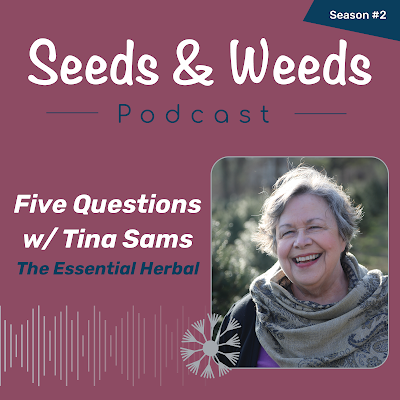The First Few Days of February
Falling midway between Winter Solstice and Spring Equinox, the beginning of
February brings the return of light and life to the Northern Hemisphere.
There are many celebrations covering a variety of spiritual traditions.
Imbolc, a Gaelic word that means “ewe’s milk” is a Celtic feast day that signifies the beginning of spring.
It has been widely observed by Gaels for centuries and it begins on the first evening of February, ending on the second. Additionally, Feb 2 is Brigid’s feast. In ancient beliefs, Brigid is a goddess. Later, there is Saint Brigid, the founder of the first monastery in County Kildare in Ireland, born in 450 AD of a pagan father and a Christian mother. Both the goddess and the saint are associated with the spring season, fertility, healing, poetry and blacksmithing. As goddess of the hearth, the goddess is equated to Greco-Roman Hestia-Vesta, and there is an eternal fire that burns in her honor. Holy wells were visited, spring cleaning begins, and fire and light are part of the celebration.
Candlemas is a Christian holy day commemorating the presentation of Jesus at the Temple, ending Christmas celebrations 40 days after Christmas. Many modern folks take down their holiday decorations on New Year’s Day, others wait until the 12th night, and still others wait for Candlemas. It is also a time to take candles to the church to be blessed, mostly a symbolic act in these days of electricity, but the candles of an entire year were blessed on Candlemas.
February 2 is Groundhog Day, and in PA, that’s a pretty big deal.
When I was little, I really believed that the groundhog knew. Maryanne’s husband’s birthday is Feb 1, otherwise known as Groundhog Day eve. If the groundhog sees his shadow (sunny day) he will be frightened and go back to sleep for 6 weeks. If it’s cloudy, he stays out of the burrow and winter is declared over.
It is also when the Gaelic Cailleach gathers firewood for the rest of the winter. If she is asleep, she doesn’t make the weather bright and clear so that she can gather plenty, so the hope is for clouds.
In 2024, the Chinese Lunar New Year is on February 10, and in China it is celebrated through February 17th, and ushers in the year of the Wood Dragon.
The date is different each year, as it coincides with the new moon. There is much feasting with unusual or hard to find delicacies, and families gather to begin the year together. Here on the hill, we found some moon cakes and have them waiting in the freezer!
I often think of how happy people must have
been to see the light returning! I can
artificially light my environment, and am very glad of it.
There are many, many traditional celebrations attached to all of these days, so
if you’d like to start a new family tradition, perhaps you’d like to choose one
and research the history and festival/feasts.
A craft that goes back centuries can be done together with the family, or as a
group of friends. Here is a nice tutorial: http://colorful-crafts.com/brigids-cross-tutorial/
For your feast…
In late winter/early spring, available food is what has been stored over the winter. To celebrate any of these feasts, try to choose dishes that work with that. Farm animals are “freshening” by giving birth, renewing their milk supply. Dried fruit and flavorful nuts and seeds are available. Root cellars kept apples, onions, garlics, potatoes, winter squash, and pumpkins, some cruciferous vegetables. A few greens could be found in sheltered areas.
Seed
Cake
This is a traditional spicy pound cake that is served without icing. Although caraway seeds are traditional,
fennel, sesame, pumpkin, poppy, coriander, sunflower, or others can be added or
substituted.
1 C butter
softened (2 sticks)
1 C granulated sugar
3 eggs
2 C flour
1 T caraway seeds
1/4 t ground nutmeg
1/4 t ground cinnamon
1/4 C brandy
4 t 10X sugar
Preheat the oven
to 300°.
Line a 9 x 12 pan with parchment, OR grease well.
In a large mixing bowl cream together the butter and sugar until light and
fluffy.
Add eggs, one at a time, scraping down sides of bowl with each egg.
In a second bowl,
blend dry ingredients.
Add half of the dry ingredients to the first bowl, stirring well.
Add the brandy and combine.
Add the remaining dry ingredients, blending just until mixed well.
Bake for 40 to 45
minutes or until a toothpick comes out clean.
When cool, sift the 10X sugar over the top.
Imbolc Incense
2
parts Cedar
1 part Copal
1 part Basil
1 part Dragons Blood
½ part Lemon Peel
½ part Chamomile
You can substitute anything that represents fire or renewal to you. For instance:
Calendula
frankincense
bay
violets
red santal
myrrh…
You almost can’t go wrong.
To burn, place a pinch of the mixture on a smoldering charcoal block. Add more when it stops smoking if desired.
If any of these holidays are new to you, I urge you to learn more about them. We can all use more celebrations in our lives, and there are lots of reasons to have them!
Note: After the newsletter
went out, we heard from our friend Justin Ferko.
Here is another celebration from the
Slavic world taking place at the same time: Gromnice, Our Lady of the Thunder
Candle/Our Lady of the Wolves:
https://lamusdworski.wordpress.com/2016/03/13/holy-mother-with-wolves/












